From the seminar in Bulgaria, I traveled by overnight bus through Skopje, Former Yugoslav Republic of Macedonia (F.Y.R.O.M) to Pristina, Kosovo where I had the opportunity to spend the afternoon. As the capital of a newly “recognized” state (by some nations at least), Pristina is in a still-developing form. Shells of under-construction churches, abandoned residences within the old town, and a stalled rehabilitation process at a Haman (Ottoman Bath) were a few visual cues of Kosovo’s trouble separating from Serbia over the last decade. However, a vibrant old town with minarets doting many corners and an economy on the euro is a good sign that there is hope.
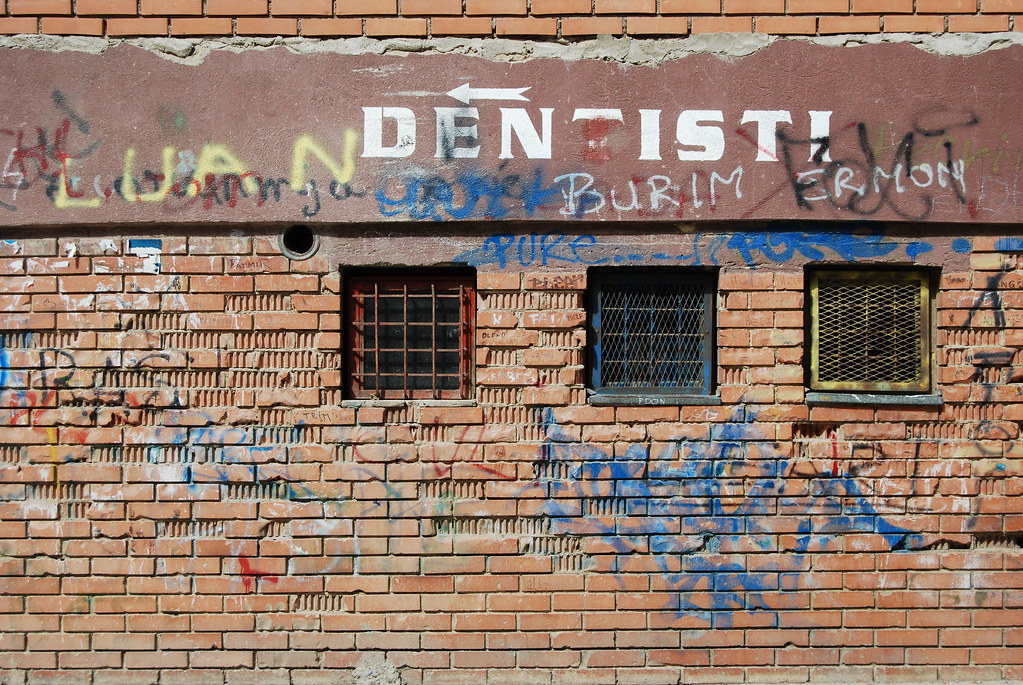 |
| Graffiti on a wall in a housing project in Pristina |
 |
| The city parks were full of people |
From Pristina I took another overnight bus trip to Sarajevo via Novi Pazar. The 11 hour bus ride dropped me at the central bus station at 5am, completely exhausted with three hours to kill until my hostel would be open. This was not nearly as bad as it seems in a city with so much to investigate! I immediately headed to the Miljacka river that runs through the center of town and walked its banks investigating the famous bridges (where WWI began and where the first victims of the Siege of Sarajevo were killed in 1992). By the time I arrived back at my hostel at 8 I had already tasted the diverse urban landscape and found myself ready to explore!
I realized that Sarajevo can be best explained by comparing elements of the city with other places I’ve been: The street life during the day in the city center is comparable to that in Thessaloniki while the marketplace nearby reminds me of a westernized version of Khan-al-Halili in Cairo. The coexistence of religious monuments (mosques, churches of multiple denominations, and mosques line the streets), although not as “holy” or religiously significant, reminds me of Jerusalem. The Miljacka river runs through the center of the city just as in Florence yet Sarajevo is tucked in a valley beneath the surrounding hills like Missoula, Montana. All of this in a landscape that still shows the scars of warfare only 15 years after the Dayton Peace Accords ended
the Siege of Sarajevo.
 |
| One of many cemeteries of those killed from 1992-1995 in Sarajevo |
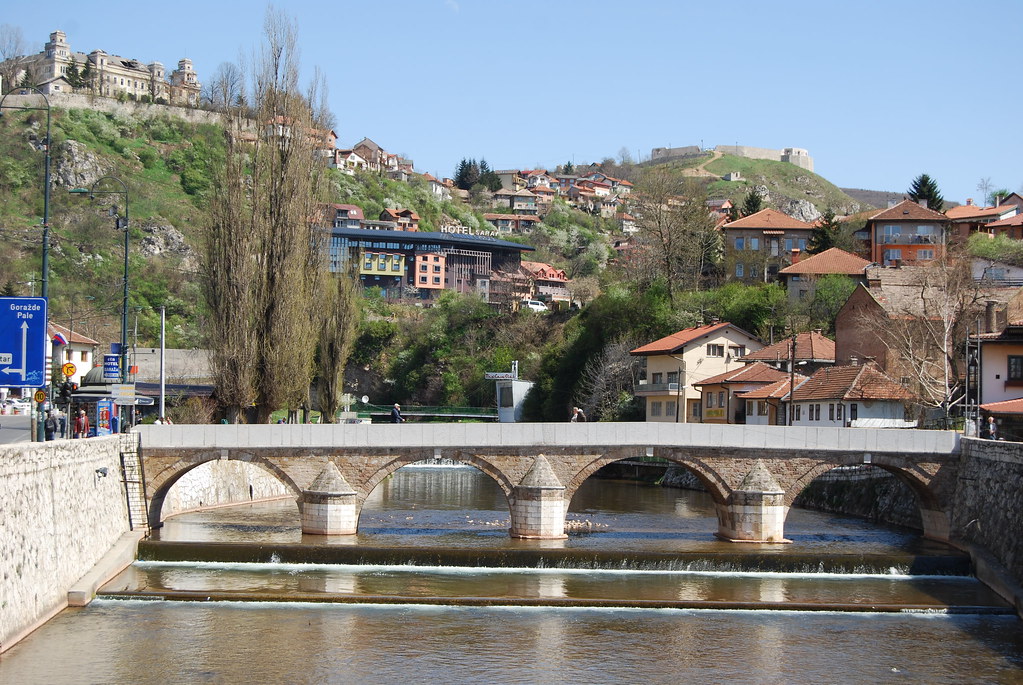 |
| Latin Bridge in Sarajevo where Archduke Franz Ferdinand of Austria was assassinated with his wife. Where WWI began. |
 |
| Skyline of minarets, bell towers, and domes |
 |
| A "Rose" marking a bomb location where a someone was killed. |
 |
| Sarajevo proved to be an incredibly interesting city full of life and diversity despite the troubles that mark its history. |
The owner/manager of my hostel, Jasmina, was born in Dubrovnik, Croatia but came to Sarajevo in 1991 to attend university. Within one year of her arrival she was trapped in her apartment as the city she was just beginning to get to know was being destroyed all around her. After four years of hell, not knowing whether a sniper or a shell would end her life that day, Jasmina has remained in Sarajevo to run a hostel (Enjoy Hostel) and tell her story. Despite all of the adversity she’s faced, I never saw her without a smile on her face. She insisted that her husband drive me and her to the Tunnel War Museum so she could tell me her story. The tunnel was the lifeline of residents within Sarajevo for many years as this 800 meter long hole connected Sarajevo under the airport, which was under the control of UN troops, with the “free area” of Butmir on the other side. Supplies, communication, and soldiers were transported back and forth along this line for years and undoubtedly saved many lives. At the end of the tour, Jasmina brought me outside of the house that the tunnel was built beneath to look at the shelled façade. She pointed to a mark left by an explosive on the ground near the door to get into the tunnel and explained how soldiers would send shifts of 10 people at a time through the tunnel for safety purposes. On one day in May 1994, Jasmina was sent through in the first group of 10 of the 100 waiting… That explosive mark she was pointing at, she explained, was left only five minutes after she was standing there killing a number of those in queue in the group she left behind.
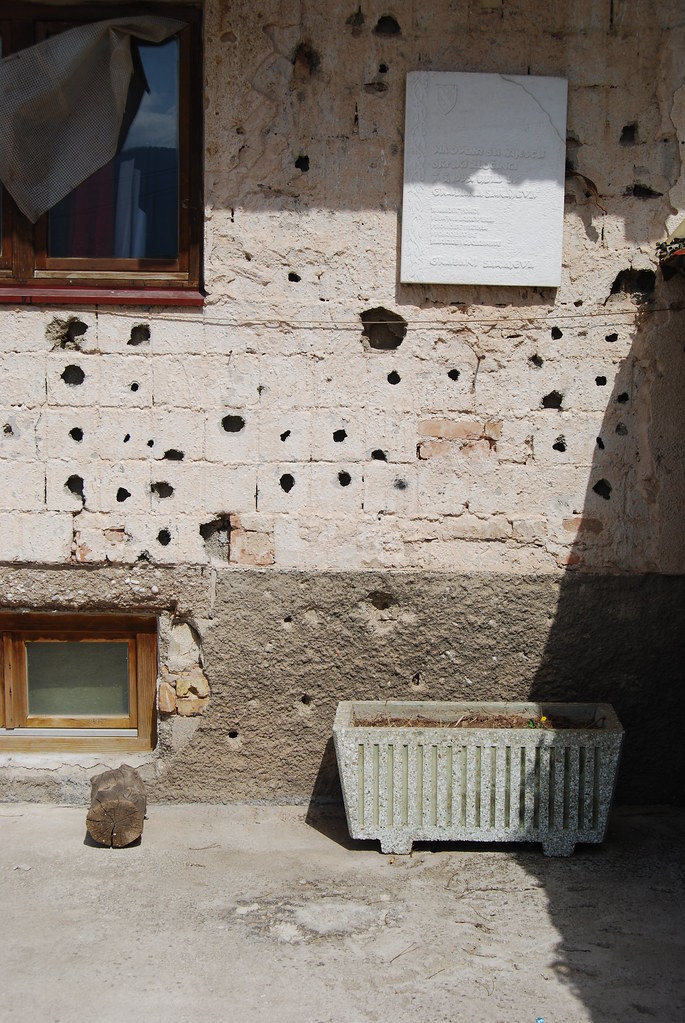 |
| Notice the explosive mark on the ground. The door to the tunnel is on the right. |
I also took a side trip to the city of Mostar, which had a vibrant Old Town and a UNESCO-monumentalized bridge before the war erupted. In a similar manner to Sarajevo, Mostar was completely devastated by shelling. Since then the city and the historic bridge have been completely rebuilt.
 |
| The bus between Mostar and Sarajevo covered a wonderfully scenic route along the river through the mountains. |
On my final day on this Balkan tour, I boarded a morning train to Belgrade, Serbia in order to have some time to see the city before I flew out that evening. The city was covered in Orthodox churches, a large pedestrian-only city center, as well as a medieval fortification that has been altered numerous times throughout its history and has been largely conserved as a park and a museum.
 |
| Main pedestrianized street in downtown Belgrade |
 |
| Belgrade fortification gate |
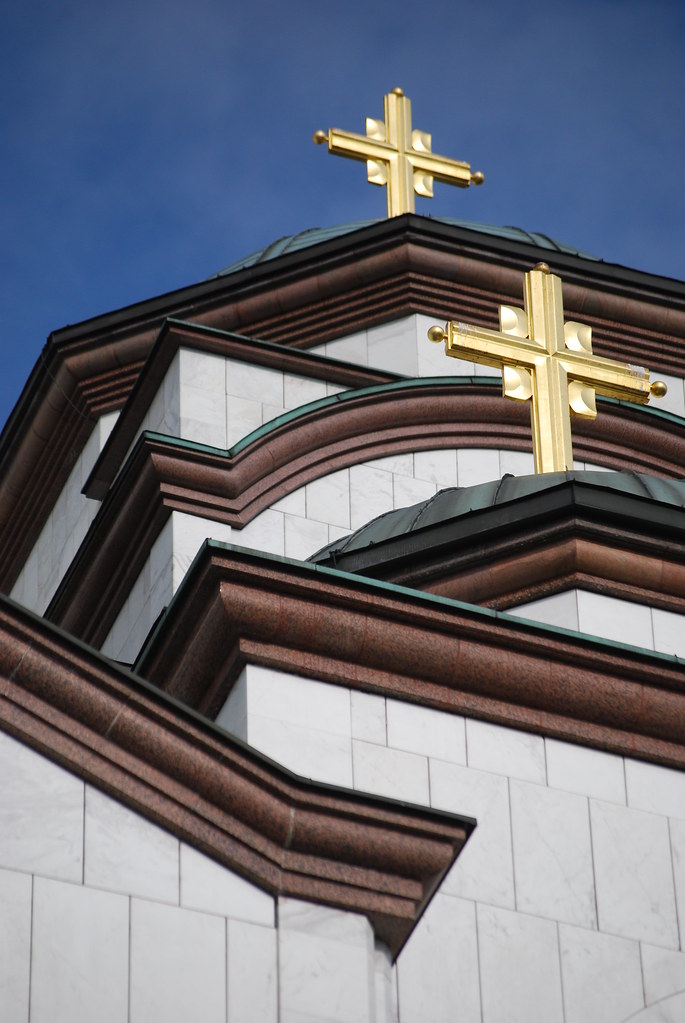 |
| Cathedral of St. Sava is the largest orthodox cathedral in the Balkans and the interior is still under construction. |











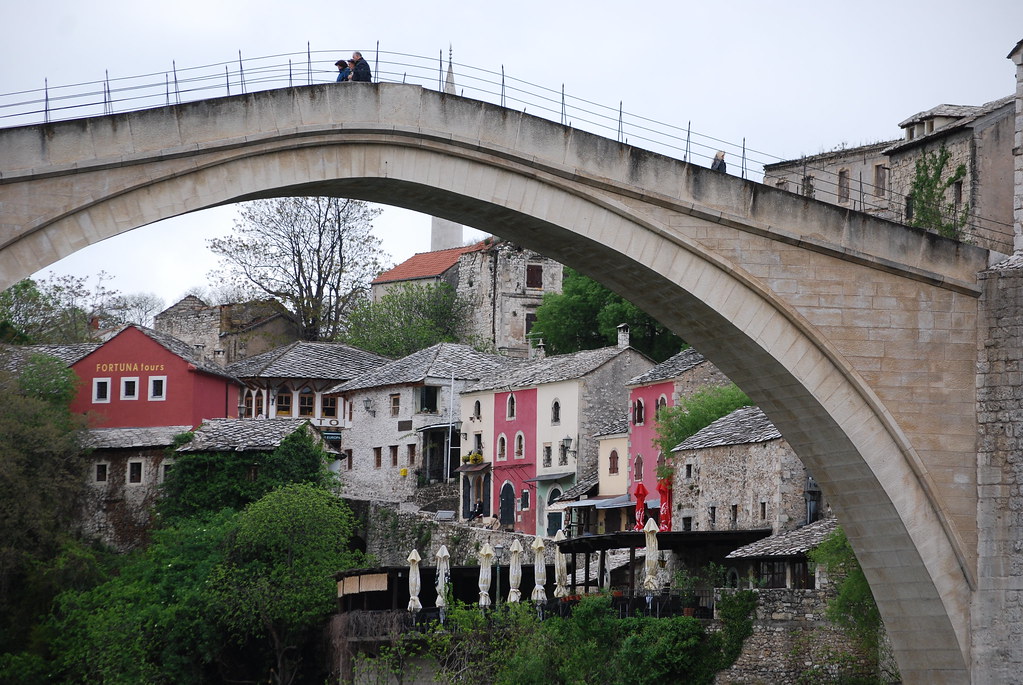


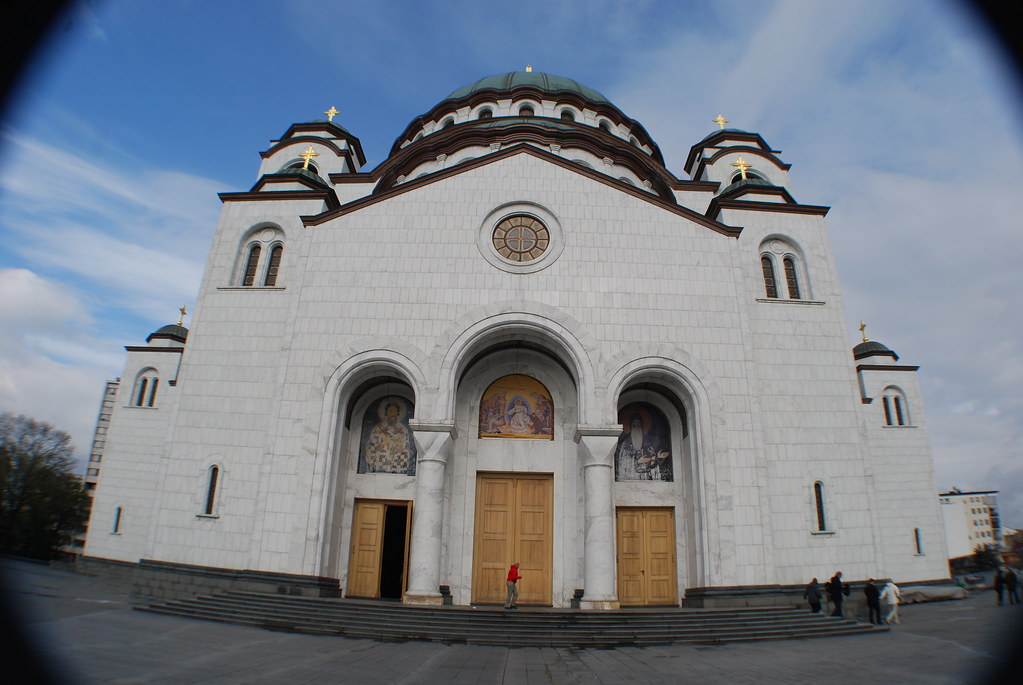


No comments:
Post a Comment